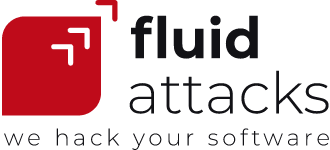| 5 min read
Table of contents
Being unaware of how flimsy your application, network or other information system is until that point when it suffers from a cyberattack is a blunder you shouldn't make. Haven't you already put into examination the potential gaps, weaknesses, or bugs in your technology? Don't let it become too late to do so. In addition, new security vulnerabilities arise all the time in systems that are constantly evolving. More than trying to identify security issues at a single stage of systems' development, or sporadically, is required. Vulnerability assessments must be continuous. Learn about this imperative cybersecurity process with the help of this blog post.
What is "vulnerability assessment"?
In cybersecurity, as in other areas, you sometimes come across the indiscriminate use of terms and concepts by vendors and the media. The term "vulnerability assessment," for instance, seems at times to mean the same as "vulnerability scanning," "vulnerability analysis," "vulnerability testing," "vulnerability investigation," and more. For practical purposes, in this post, we'll start by assuming only the first association and later refer to another one.
Vulnerability assessment is usually seen as the systematic evaluation of IT systems to identify, classify and report security weaknesses or vulnerabilities in their source code, operations, components, etc. Such assessment can be carried out by automated tools or scanners (hence it's commonly called "vulnerability scanning"), which can detect only known security issues (such as those that appear in the free-to-use list Common Vulnerabilities and Exposures, CVE.) In other words, the scope of the analysis of a system by one of these tools depends on the information it has in its database.
Why is vulnerability assessment important?
Typically, in a security vulnerability assessment or scanning, the tool is expected to report each finding with essential details, such as its category, location, and severity, to simplify and prioritize its remediation in a vulnerability management program. (As we'll see below, a vulnerability management solution has, among its parts, vulnerability assessment operations.) Vulnerability remediation is a fundamental operation to mitigate the risk exposure in the system under evaluation and, consequently, improve the security of the organization or individual owning the system. The risk, in this scenario, is linked to the possibility of a threat actor or cybercriminal exploiting the system's weaknesses in a cyberattack to gain access to sensitive information, steal monetary resources, or disrupt functions or services, among other things. Therefore, vulnerability assessment acts as an essential component of a preventive strategy. Prevention naturally helps avoid costs associated with delayed remediation and impacts from cyberattacks. As an extra benefit, when it comes to the legal field, vulnerability assessment assists companies in various industries to comply with some requirements of international security standards such as PCI DSS, HIPAA, ISO 27001, GDPR and more.
What are the types of vulnerability assessment?
Generally, the classification of the vulnerability assessment is based on the possible IT systems under evaluation or scanning. Thus, we can speak of "host vulnerability assessment" when the targets of evaluation for vulnerability identification are servers, workstations, or other hosts, i.e., devices connected to a network. Then, when the target is an entire network, whether public or private, wired or wireless, with all its accessible resources, we have the "network vulnerability assessment." When it comes to detecting security weaknesses in databases and big data systems or environments, we have the "database vulnerability assessment." Finally, we speak of "application vulnerability assessment" when the target is a web or mobile application in which dynamic analysis of its operations and static analysis of its source code are applied.
At this point, the following question arises: Could we also classify vulnerability assessment according to vulnerability identification methods? Well, this is where a second association of terms comes in.
Vulnerability assessment vs. penetration testing?
Apart from what we said before about the relationship between vulnerability assessment and vulnerability scanning, we can also talk about the connection between vulnerability assessment and penetration testing (aka pentesting). Pentesting may be classified as another vulnerability assessment methodology, and many people do so (some of them speak of VAPT: vulnerability assessment/penetration testing). Even the nowadays quite popular artificial intelligence ChatGPT did it, putting it as the third type after "network vulnerability assessment" and "application vulnerability assessment." However, penetration testing is a methodology; it does not refer to a specific system to be evaluated. Therefore, it enters more easily into a comparison context with vulnerability scanning, another methodology. Both are different processes to identify vulnerabilities that, in fact, can complement each other in what we might call a "comprehensive vulnerability assessment."
Penetration testing is also a vulnerability detection and reporting procedure but, although supporting tools are used, it is mainly carried out manually by ethical hackers or "pentesters." What these professionals essentially seek is to identify vulnerabilities outside the automated tools' spectrum. Those that are more complex (often of higher severity) or previously unknown (i.e., zero-day vulnerabilities). Pentesters' framework is to think and act like attackers. Thus, beyond detecting vulnerabilities, they exploit them, simulating "real-world" attacks to prove the potential impacts. Additionally, pentesting serves to reduce vulnerability scanners' false positive and false negative rates. Specialists are responsible for reviewing and rectifying erroneous reports according to their capabilities.
For more information on penetration testing, you can read our recent series of posts: "What is Manual Penetration Testing?," "Types of Penetration Testing," "Penetration Testing Compliance," and "Continuous Penetration Testing."
Vulnerability assessment as part of a vulnerability management
Detecting vulnerabilities and, among other things, detailing the risks they represent is fundamental for prioritizing them prior to remediation. Logically, those security issues that pose the greatest danger (i.e., the most significant impact if exploited) are the ones that must be addressed and solved urgently. The limited resources, such as time and effort, should be invested in them first. The vulnerability assessment, ideally with vulnerability scanning and pentesting, can then be part of an overall solution where beyond recognizing and detailing them, security issues are prioritized and remediated, i.e., vulnerability management.
The prioritization of vulnerabilities depends on the assets and functions at risk (there must be prior clarity on what all the assets are and their value to the organization), the ease of exploitation of such issues and the damage they could cause, among other things. Generally, vulnerabilities are rated with the Common Vulnerability Scoring System (CVSS), although, at Fluid Attacks, we already prefer to use that metric modified: "CVSSF." On the other hand, vulnerability remediation can occur through the implementation of security controls, configuration changes, and the development and application of patches, all of them suggested by vulnerability scanners and security analysts.
As part of DevSecOps, the currently predominant culture in cybersecurity, in which there is an awareness of changing technology (resulting from functionality and security optimizations, for example) and growing threats, vulnerability assessment, or better yet, vulnerability management, must be performed continuously. This solution must take place from the earliest stages of the software development lifecycle (SDLC). Companies can integrate vulnerability assessment tools and procedures with vulnerability management tools. These tools allow users to have reports with detailed and prioritized vulnerabilities and the necessary recommendations to work on their remediation in one place. This and more is what you can find in Fluid Attacks' platform.
Vulnerability assessment and management with Fluid Attacks
At Fluid Attacks, we provide vulnerability assessment services. With our own vulnerability assessment tool, we execute vulnerability scanning. Through our experienced and certified ethical hackers, we perform penetration testing. Using different methodologies, we identify vulnerabilities in your web and mobile apps, thick clients, APIs and microservices, cloud infrastructure, networks and hosts, IoT devices, containers and IaC. Being our customer, you get all reports of security issues in your systems on our platform for vulnerability management. There, beyond obtaining details of each finding, and evidence that supports its existence and possible exploitation, you receive recommendations and advice for remediation, a task that even you can assign to members of your team from the platform. From there, you can also track your company's risk exposure mitigation progress and recognize whether it complies with some of the requirements of more than 60 international security standards.
All this is part of our distinctive service: Continuous Hacking. If you're not yet part of our customers, but you'd like to try for free for 21 days our plan with vulnerability assessment by automated tools (Essential plan), follow this link. Contact us if you'd rather immediately get the comprehensive plan with assessment both by vulnerability scanning tools and ethical hackers (Advanced plan).
Table of contents
Share
Recommended blog posts
You might be interested in the following related posts.











